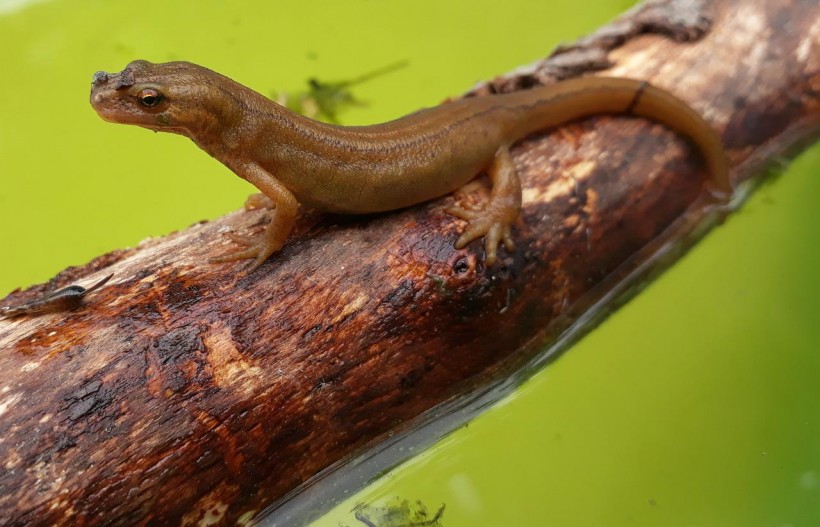Lungs are important organs to many vertebrates, but some animals manage to live without them. In the animal kingdom, four amphibian clades successfully eliminated pulmonary respiration and lungs and used their wet skin to breathe. But little is known about lung loss in these amphibian clades.
The new study from the Department of Organismic and Evolutionary Biology and Harvard University's Museum of Comparative Zoology examined the lungless salamander Plethodontidae to find out how they developed lungs as embryos and mysteriously lost them, shedding light on the evolution of lung loss.

Lungless Salamander Developed Lungs at Early Stage of Embryonic Development Before It Mysteriously Disappears, Study Reveals
Lungless Salamanders Have Lungs as Embryos
Plethodontidae salamanders lived for 25 million years without lungs and only breathing through their slimy skin and mouth tissues. According to Amphibian Planet, salamanders must cover themselves with slime, like lung mucus on their skin, because they absorb oxygen molecules through it.
Science Alert reported that lungless Plethodontidae is the biggest group among the 478 salamander species that mainly live in the Americas, some in Europe, and South Korea. However, not much information is available about their lungs and how they misplaced them. Evolutionary biologist Zachary Lewis from Harvard University and his colleagues took a closer look at these amphibians.
They wrote in their paper, titled "Developmental Basis of Evolutionary Lung Loss in Plethodontid Salamanders," published in Science Advances, that an incipient lung formed in embryos in several lungless salamander species that resemble those seen in the lunged salamander axolotl (Ambystoma mexicanum).
Moreover, these lungs that developed during their embryonic stage branch out for around three weeks in P. cinereus before disappearing. But then the early lung cells are already programmed to undergo a cell death called apoptosis just before they hatch from their eggs.
When Did Lungless Salamanders Lost Their Lungs?
The researchers used histology and micro-CT scans to examine the morphology of lung development in lungless and lunged salamanders, SciNews reported. Dr. Lews and colleagues hypothesize that although both salamanders developed lungs as embryos, the development of lungs in lungless species stopped due to a lack of cues that maintain the process.
Lungs are said to develop from the tissue mesenchyme that surrounds them as it develops. So when the team tried to put the mesenchyme from a lunged salamander into a lungless salamander embryo, it resulted in structures that resemble lungs.
The findings suggest that even lungless salamanders can continue the development of lungs as their developmental-genetic pathways are spatially conserved despite adult salamanders not having functional lungs for millions of years.
Researchers noted that understanding the evolution of lung loss in Plethondontidae gives insight into organ loss in other vertebrates. Dr. Lewis said that in the future, scientists would have a complete understanding of how evolution helps species to lose an organ that is critical to achieving life.
RELATED ARTICLE: Limb Regeneration in Salamanders May Be Possible Soon, Mystery Behind It's Unique Ability Nearly Unveiled
Check out more news and information on Amphibians in Science Times.

![Humans Will Go Extinct on Earth in 250 Million Years; Mass Extinction Will Occur Sooner if Burning Fossil Fuels Continues [Study]](https://1721181113.rsc.cdn77.org/data/thumbs/full/53373/89/56/50/40/humans-will-go-extinct-on-earth-in-250-million-years-mass-extinction-will-occur-sooner-if-burning-fossil-fuels-continues-study.jpeg)












